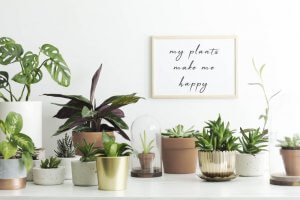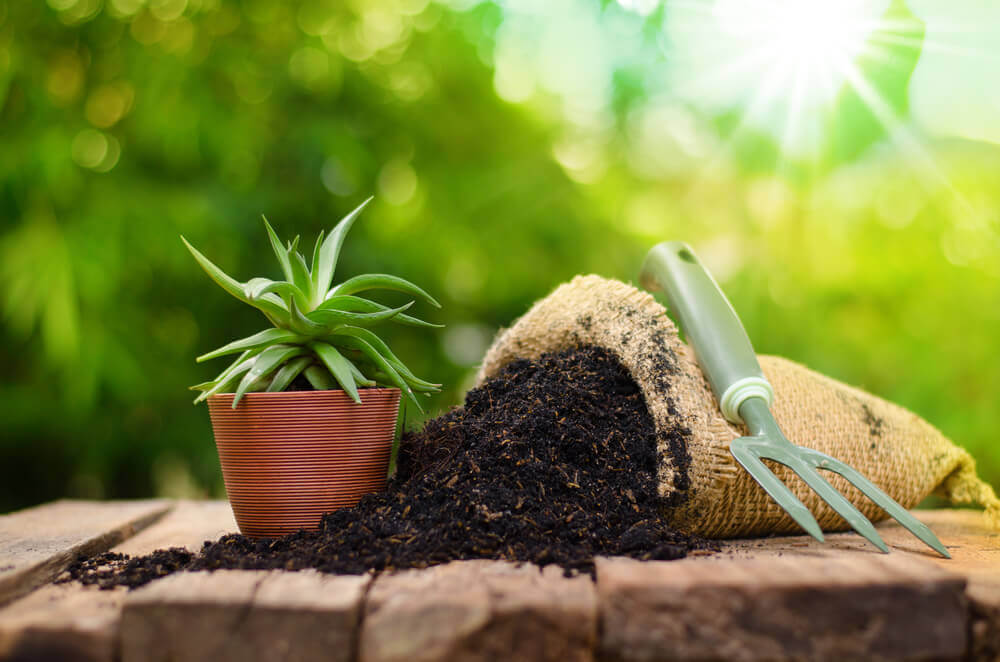Basic Care for Your House Plants

In our post today, we want to go over basic care for house plants. Not surprisingly, each plant has its own requirements. But there are general care tips that apply to all kinds.
In addition, care also includes where you place your plants and the surrounding atmosphere.
Indoor plants have great health benefits in addition to being a beautiful decor. For example, they can give you cleaner air to breathe.
Place house plants in a light area

Light is essential for almost all plants though how much light each one needs depends on their species. Try to put them in a spot that receives plenty of light so your plants can photosynthesize.
First look for places next to a window, on a balcony, etc. Remember that you can always move them if you notice that their leaves start to yellow or fall.
If your home doesn’t receive much natural light at all, you have two options: look for plants that don’t require much light or find artificial light sources for your plants. Artificial lights are easy to find and you can even purchase them in online stores.
Temperature

First things first, analyze the normal temperature of your home. Be thorough and consider the direction your home faces (or the direction of the part of your home where you want to place your plants). In addition, think about your heating and cooling system and how it can affect your plants.
If you live in a hot climate, try plants that can support summer temperatures like succulents, sansevieria or cacti. You can also consider other plants for specific times of the year – in autumn, chrysanthemums and pansies are great options.
Humidity

Humidity is closely related to temperature– especially in the wintertime when factors like heaters can dry out your home. Dry settings aren’t recommended for house plants.
Additionally, keep in mind that many interior plants are tropical and require a humid environment. The best solution to this situation is using a water spray periodically during winter months. If your plants have flowers, try to avoid spraying them.
If you don’t want to spray your plants with water, try placing them on top of a plate of water. To slow down the evaporation, add water to a plate with gravel and place the plant on top.
The right care will depend a great deal on where you live as the natural humidity levels are a big factor. If you live in a drier area, make sure to try our tips.
Fertilizer and watering

Both fertilizer and watering are essential for plant care. Remember that your plants won’t suffer too many temperature changes because they’re indoors. That means you won’t have to water them in the summer as much as you would if they were in your garden.
Once again, remember that it all depends on the plant species that you have. Some plants barely need to be watered, which are great options for people who aren’t good at plant care.
Soil can help you see how your plant is doing. If necessary, you can use a hydrometer to monitor the humidity levels of your soil.
Lastly, remember to fertilize your plants, especially during certain times of the year like when they flower. There are all kinds of fertilizers that you can buy and you can even make your own.
As you’ve read with us today, basic plant care isn’t complicated at all. Just be sure to know what your plants need to offer them the best care possible.
In our post today, we want to go over basic care for house plants. Not surprisingly, each plant has its own requirements. But there are general care tips that apply to all kinds.
In addition, care also includes where you place your plants and the surrounding atmosphere.
Indoor plants have great health benefits in addition to being a beautiful decor. For example, they can give you cleaner air to breathe.
Place house plants in a light area

Light is essential for almost all plants though how much light each one needs depends on their species. Try to put them in a spot that receives plenty of light so your plants can photosynthesize.
First look for places next to a window, on a balcony, etc. Remember that you can always move them if you notice that their leaves start to yellow or fall.
If your home doesn’t receive much natural light at all, you have two options: look for plants that don’t require much light or find artificial light sources for your plants. Artificial lights are easy to find and you can even purchase them in online stores.
Temperature

First things first, analyze the normal temperature of your home. Be thorough and consider the direction your home faces (or the direction of the part of your home where you want to place your plants). In addition, think about your heating and cooling system and how it can affect your plants.
If you live in a hot climate, try plants that can support summer temperatures like succulents, sansevieria or cacti. You can also consider other plants for specific times of the year – in autumn, chrysanthemums and pansies are great options.
Humidity

Humidity is closely related to temperature– especially in the wintertime when factors like heaters can dry out your home. Dry settings aren’t recommended for house plants.
Additionally, keep in mind that many interior plants are tropical and require a humid environment. The best solution to this situation is using a water spray periodically during winter months. If your plants have flowers, try to avoid spraying them.
If you don’t want to spray your plants with water, try placing them on top of a plate of water. To slow down the evaporation, add water to a plate with gravel and place the plant on top.
The right care will depend a great deal on where you live as the natural humidity levels are a big factor. If you live in a drier area, make sure to try our tips.
Fertilizer and watering

Both fertilizer and watering are essential for plant care. Remember that your plants won’t suffer too many temperature changes because they’re indoors. That means you won’t have to water them in the summer as much as you would if they were in your garden.
Once again, remember that it all depends on the plant species that you have. Some plants barely need to be watered, which are great options for people who aren’t good at plant care.
Soil can help you see how your plant is doing. If necessary, you can use a hydrometer to monitor the humidity levels of your soil.
Lastly, remember to fertilize your plants, especially during certain times of the year like when they flower. There are all kinds of fertilizers that you can buy and you can even make your own.
As you’ve read with us today, basic plant care isn’t complicated at all. Just be sure to know what your plants need to offer them the best care possible.







